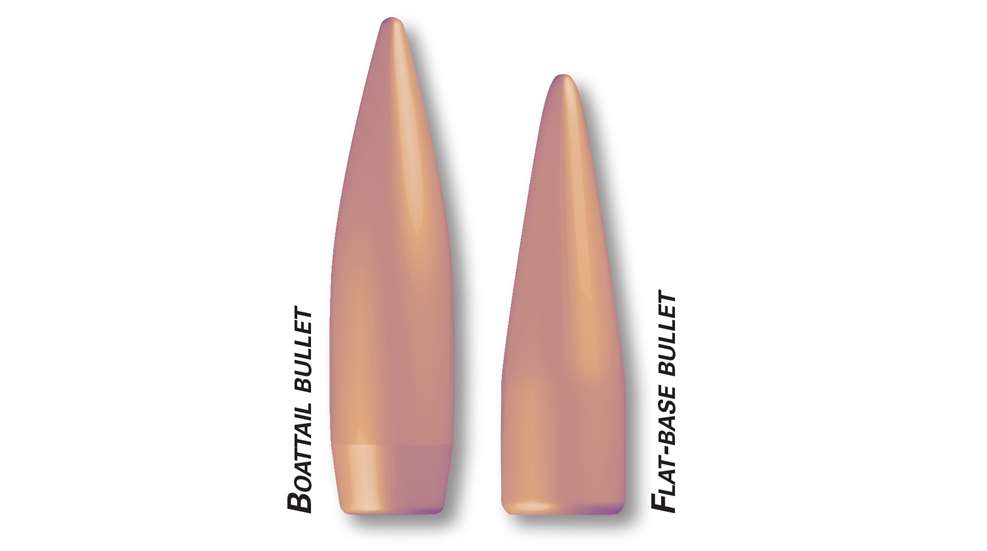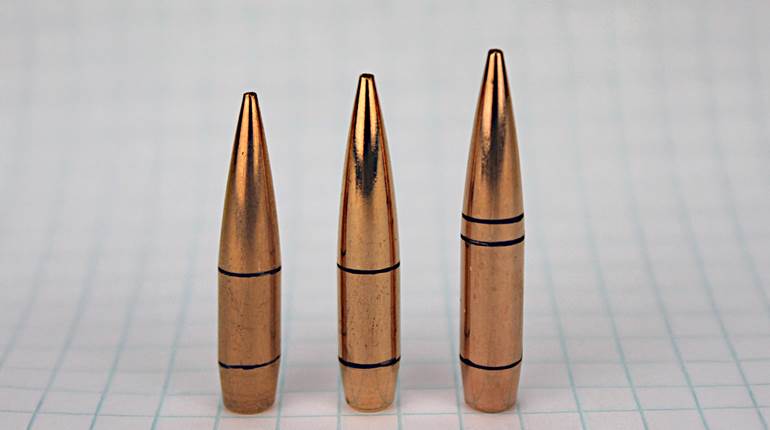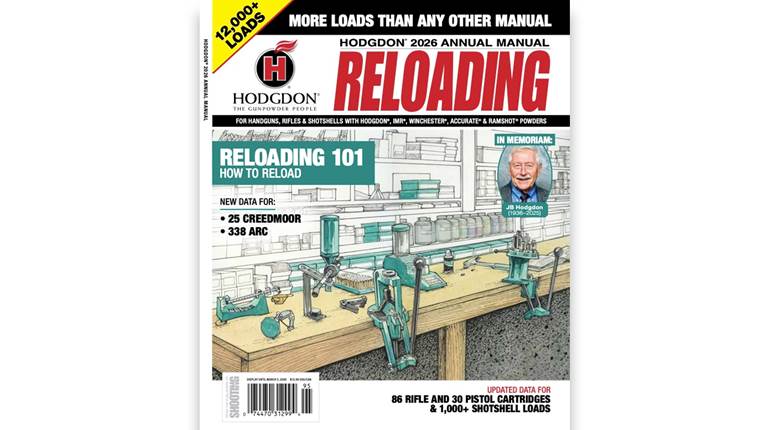
Q. In the recent spate of “long-range” boattail bullets presented to the market, I’ve observed the boattail’s degree of departure from the bullet’s cylindrical axis varies substantially from one design to another. One factor I am concerned about is the deleterious effect of throat and bore erosion that may be accelerated by the use of boattails.
A. All things considered, utilizing boattail bullets will result in throat erosion at a faster rate than with flat-base bullets. The best explanation I have found was offered by Dave Corbin, “Since gas pressure acts normal to all surfaces (at 90 degrees), the compressive force of chamber and barrel pressure tends to compress the boattail section of the jacketed bullet inward, peeling it away from the bore and allowing gas to channel its way into the rifling grooves, causing gas cutting of the rifling edges and the edges of the rifling imposed on the bullet. Micro droplets of melted jacket material can be observed on most boattail bullet jackets along the rifling edges, especially toward the rear of the bullet shank, some large enough to see without a magnifying aid. The flat-base bullet tends to compress in length so that the shank is expanded into the rifling, for a superior seal.”
What does this mean to the shooter? It depends on the discipline’s intended goals. If your shooting does not extend beyond 200 yards, then you will likely not achieve the best accuracy with boattail bullets. Competitive benchrest shooters tend to use flat-base bullets. If true long-range shooting is your goal, then boattail bullets are your only means of getting there, as their ballistic coefficients give the necessary edge. If erosion becomes an issue, replace the barrel.
If the pursuit is hunting, then it is unlikely that using a boattail bullet will offer any advantage at what are considered typical sporting ranges. However, considering the relatively few shots fired in the life of a hunting rifle, any reduction in barrel life due to the use of boattail bullets would be moot. It is more difficult to produce an accurate boattail bullet, and some sources are better at it than others. Any variation in the angle of the tapered shank or dimensional location of origin will have a deleterious effect. The angle is determined in the engineering, based on too many variables to consider here.
—John W. Treakle, Contributing Editor





































